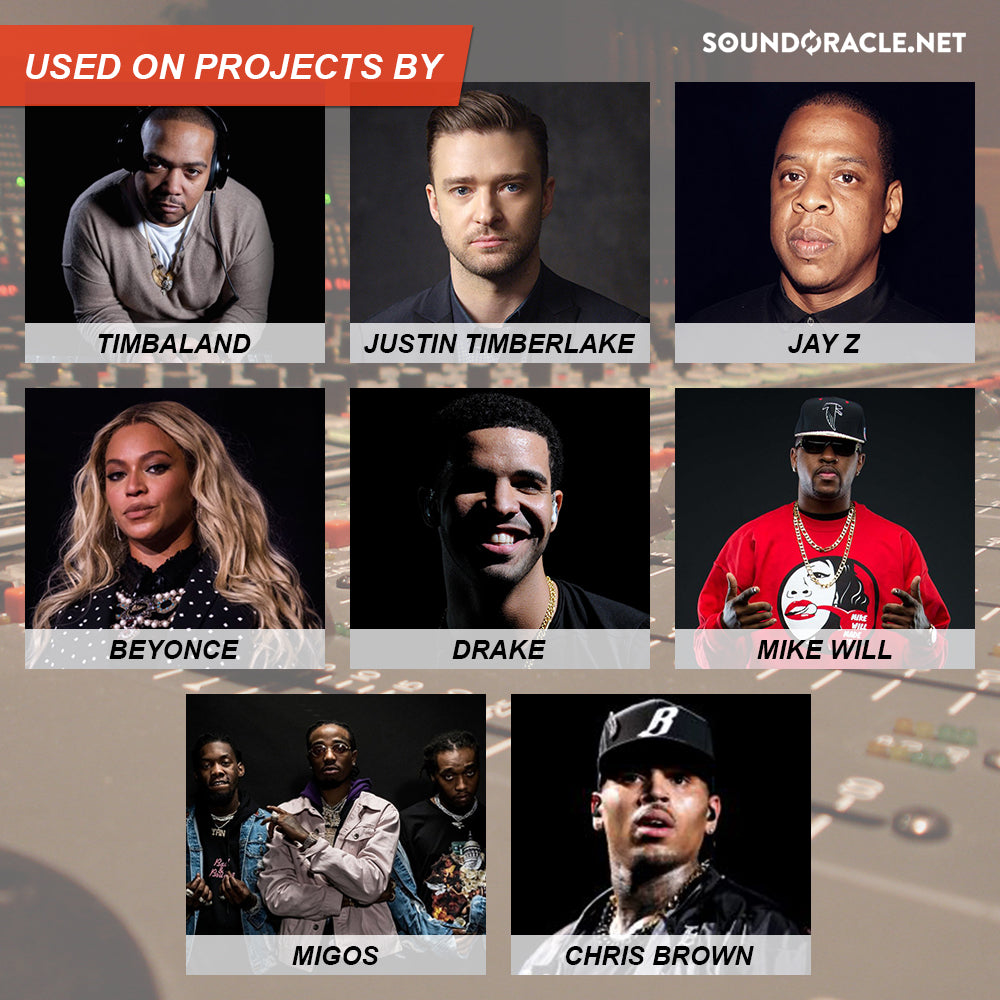Like most aspiring Producers and Engineers, I too struggled with getting that clarity and shine in my mixes that I would hear every day on the radio. A mix where every sound had its place and it would just blow people’s mind with what they were hearing. In the beginning, I remember so vividly how I would just stack sounds wherever and then add effects like reverbs and delays without any regards for conflicting frequencies. Then I would be distraught and frustrated that my vision wasn’t coming to life the way I heard it in my head. Well in this article I hope to shed some light on how to get out of these frustrations. So, with that I bring to you 7 Ways To Clean Up Your Muddy Mix.
1. Record And Capture Sounds Properly
Remember we want to compare the mixing process to cooking your favorite exquisite dish. Everything else following is contingent on you capturing and recording the sounds you want to use accurately. If you are recording say a vocal for instance, and you have the artist too close to the microphone, you will get a very undesirable proximity effect in your vocal. This will contain unnecessary Low and Mid frequencies that will clash with other instruments that are ideal for occupying this frequency range. The key is to make sure you are recording instruments and sounds correctly, accurately, and without digital distortion, so we have the perfect starting point for addressing any further masking and muddiness issues down the road.

2. Take Out Unnecessary Frequencies
The Human range of hearing really cuts off at anything below 20 Hertz(Hz). Anything below that is more felt than heard. With that being said, off the top, I would filter out at least 20 Hz and below on every sound or instrument except maybe the sub sounds or 808. Though we can’t hear these frequencies, it doesn’t mean that they aren’t there. They will soon build up in a mix quickly and mask other instruments and sounds you want to shine and cut through.

3. Make Room For Instruments Using The Stereo Field
When listening to a song of any genre you will find that most things are panned in certain places without change and for good reason. Typically, some instruments work best with others when placed in certain places within the stereo field. For example, the lead vocal and bass are typically up the middle. This is because bass and sub frequencies work best in mono typically, while the lead vocal is usually the most important aspect of the song, so you want that up front and in your face. Things like pads and strings are typically panned on the sides because they take up such a broad and wide frequency spectrum they need to be moved out of the way of say, the things that need to shine like the lead vocal. Otherwise they would simply cover up and mask the frequency space the lead vocal needs making everything sound muddy. Do your research to see where more instruments are typically panned then listen to reference songs and experiment.

4. Feather Conflicting Frequencies To Give Each Sound Its Own Space
Just because you have EQ’ed your favorite Kick, Snare, or Piano sound, in solo and it sounds great, doesn’t necessarily mean it will sound good in the whole mix with a bunch of other instruments and sounds doing their thing as well. Everything you do should be in the context of the mix. In solo, the Piano could sound horrible, but in the context of the mix it will sound amazing. That being said, every instrument and sound should have its own space frequency wise to be heard. For example, the lead vocal typically takes up the range between of 1-3k where the most important information lies. With that in mind, you want to make sure that none of your other instruments are taking up this space. Go in with an EQ on all the other instruments and sounds that have this frequency and reduce it to let the vocals shine. The premise is the same for all other sounds as well. Decide what frequency space is ideal for each sound and carve out that space in the mix for each sound respectively.

5. EQ and Control Your Effects
One of the things I see that people tend to overlook is EQing and Stereo spread of your effects like reverb and delays. Nothing will make a mix muddier than too much reverb or not controlling where the reverb for each sound is. A lot of time when I add reverb to things, especially vocals, I am filtering out some of the highs and some of the lows. More specifically it is called the “Abbey Road” Reverb trick which dates back quite a bit in the field of mixing. It is definitely worth the research to investigate this technique specifically. Essentially though, all this is doing is making sure the reverb doesn’t have a lot of unnecessary frequencies in it that will muddy up and cloud your mix in the high and low end of the frequency spectrum. The same also goes for how far wide your reverb is in the stereo field. In some cases, you may want your reverb to be extremely wide, like on vocal to give it an added dimension. But some sounds, like a distant hit or yell you may only want the reverb to be around that sound panned in a specific area. Most reverbs have a width setting that you can start with. The idea is simple. Control where your effects are in the mix and don’t let them conflict with other effects.

6. Adding Wanted Noise and Eliminating Unwanted Noise
A lot of the plugins out now days are remakes or emulations of classic analog gear. As most of us know, the things that were inherently great about analog gear was the noise, harmonics, and saturation it gave off. A lot of the plugins now have an analog feature that tries to emulate this noise but the trick is knowing how much should be added and how much shouldn’t. Say you are mixing and you have 100 tracks you are dealing with that need to be EQ’ed. Then you decide to use the Waves SSL EQ on every sound with the analog parameter on. Though this feature is pleasant in small doses, too much of the analog noise on every plugin will build up quick and start to mask frequencies you want to shine. I’d say maybe use this analog noise feature on just your sub groups, but on every single channel, on every single plugin may be a bit much.

7. Take Advantage Of Mid/Side Processing
This may be a little advanced for some, but Mid/Side processing is a powerful technique that will completely open your mix up and give it strong clarity and transparency. Mid/Side processing for those who don’t know is a specific EQ technique where you are processing just the information that is on the sides and just the information that is in the middle separately. This is typically done on the master fader, as you want to effect all of the instruments together as a whole. This will help to give you even better separation from the things you want to stay in the middle like the Lead Vocal and 808, to the things you want on the sides like Pads and Background Vocals. One of my favorite plugins to accomplish this is the Fab Filter Pro Q2. Switch it into Mid/Side(M/S) mode and experiment.

Written for SoundOracle.net by Mitchell "The Innovator" Tillotson, Producer
....Guest blogger...
Mitchell “The Innovator” Tillotson is a Music Producer, Musician, Songwriter, and Sound Designer hailing from the greater Baltimore area. Growing up as a Military Brat in the early 90’s and 2000’s and listening to producers like Teddy Riley, Rodney Jerkins, The Neptunes, and Timbaland, he fell in love with music at an early age. The recent Fullsail Music Production Grad and Navy Veteran grew up deejaying the local scenes in the Baltimore/DC areas and is now starting to take the music world by storm. Follow @iamtheinnovator on Twitter.
MORE ARTICLES BY MITCHELL “THE INNOVATOR” TILLOTSON:
- Chord Technique: How to Add More Harmonic Color To Your Musical Compositions
- 7 Tips For Creating Better Musical Arrangements
- 7 Ways To Dramatically Increase Your Music Production Workflow
- 7 Ways To Get More Of Your Audio Loops
- 11 Ways To Improve Your Mixes Instantly
- Top 10 MIDI Keyboard Controllers 2017
- Classic Songs Created With The Iconic Roland TR – 909
- Classic Songs Created With The Iconic Roland TR – 808
- How To Sample The World Like A Pro
- World's Best Computers For Music Production 2017






Good Stuff Right Here.